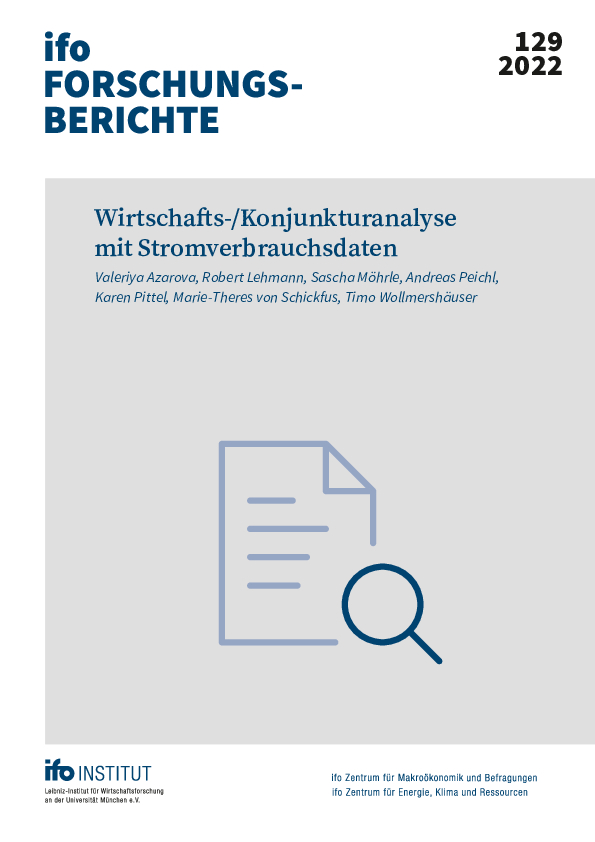Economic and Business Cycle Analyses with Electricity Consumption Data
ifo Institut, München, 2022
ifo Forschungsberichte / 129

The Corona crisis underscored the need for unconventional data sources to assess the current economic situation in a timely manner. The data situation is particularly difficult for the German states. This research report addresses the question whether high-frequency data on Bavarian electricity consumption are suitable for economic and business cycle analyses. First, it examines electricity consumption of large consumers with regard to energy efficiency, distribution of peak loads, and effects on air pollution. Second, we focus on the question whether electricity consumption is suitable for dating the Bavarian business cycle. Third, it is examined whether electricity consumption data can be used to forecast industrial production in Bavaria. Overall, the new data source proves to be promising and useful. In a purely descriptive analysis of energy efficiency, breaks are found in the time course of aggregated electricity consumption data, which could be attributed to the introduction of energy policy measures. For a causal interpretation, however, disaggregated data are required. In addition, differences in peak loads compared to Germany were found, as well as a positive influence of industrial electricity use on the main air pollutants. Furthermore, the aggregated electricity consumption data are suitable for dating the cyclical swings in Bavarian industrial production. Thus, especially the severe recessions as well as the subsequent recovery phases are reliably indicated by electricity consumption. In addition, the Bavarian electricity consumption data have a high predictive power for forecasting Bavaria's industrial production on both a monthly and weekly basis. When forecasting the current month (nowcast), Bavarian electricity consumption is the best indicator on average. However, when forecasting the next month, electricity consumption loses forecasting power.